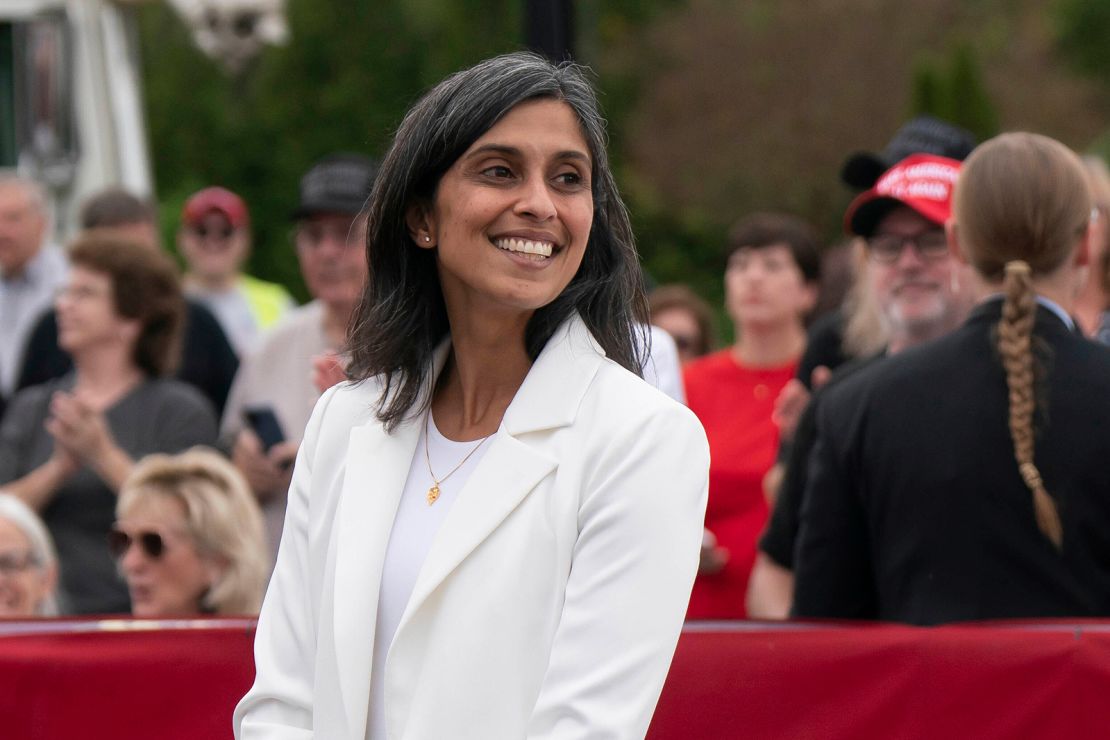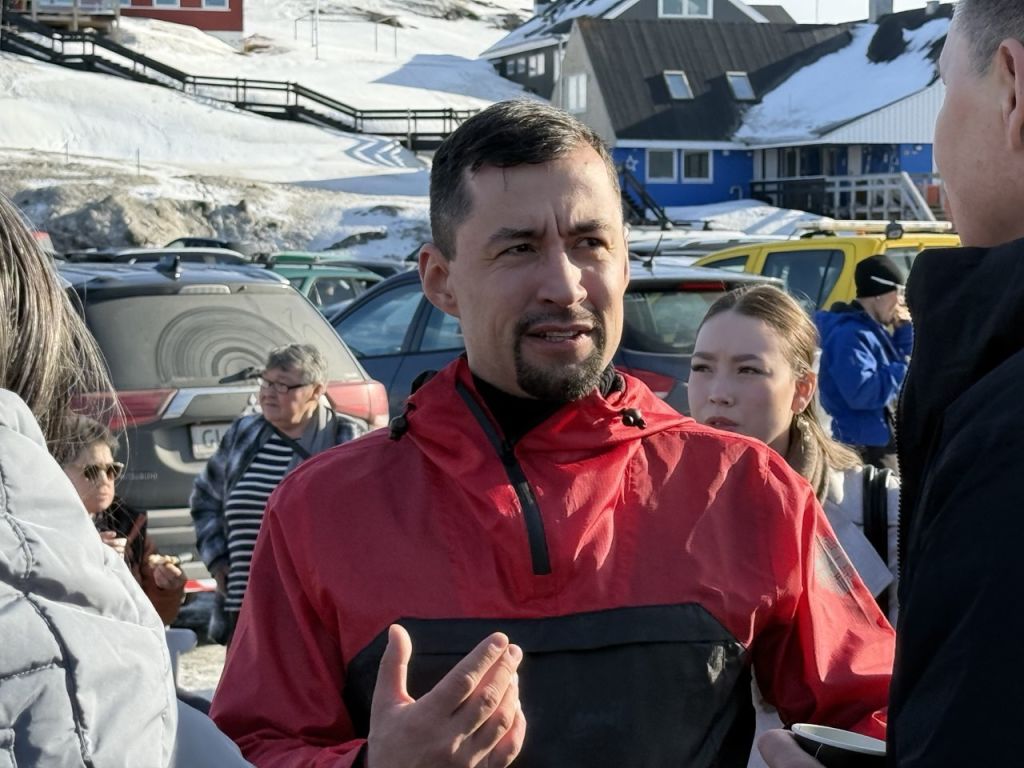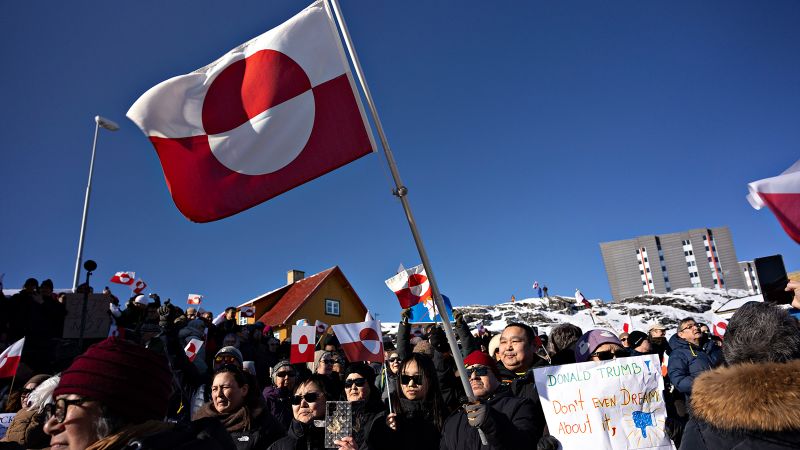Tensions surrounding Greenland’s future have reached new heights recently, with a notable diplomatic visit from Usha Vance, wife of U.S. Vice President JD Vance, igniting controversy. Vance is visiting Greenland to attend the island’s national dogsled race, an event that celebrates Greenlandic culture and unity. However, the trip has sparked strong reactions, particularly from Greenland’s Prime Minister, who criticized what he sees as a growing pressure from the U.S.
The Growing Tensions Over Greenland’s Future
The backdrop to this diplomatic exchange is the ongoing interest the U.S. has shown in Greenland’s strategic importance. Greenland, with its vast natural resources and proximity to the Arctic, has long been seen as an asset in global geopolitics. The U.S., in particular, views Greenland as a crucial location for its military operations, especially due to the Pituffik Air Base, which serves as an essential part of the U.S. early-warning radar system.
During a recent interview on Fox News, JD Vance expressed concerns about Denmark’s control over Greenland, suggesting that the country has not been fulfilling its responsibilities and that the U.S. might need to take a more active role in the territory’s future. He also emphasized that if territorial interest in Greenland aligns with U.S. national security, then the U.S. would pursue it, with the backing of former President Donald Trump’s administration.
Vance’s statements have raised eyebrows, with critics pointing out the implications for Greenland’s sovereignty and the geopolitical tensions this could create. The conversation surrounding Greenland’s political future, combined with the U.S. administration’s public stance, is only intensifying the debate.

Usha Vance’s Visit Sparks Controversy
Adding to the growing tension, Usha Vance, along with National Security Advisor Mike Waltz, is set to visit Greenland. The trip, according to the White House, is meant to celebrate Greenlandic culture, with Vance attending the Avannaata Qimussersu, Greenland’s national dogsled race, and visiting important historical sites. However, many question the timing of the visit, as it coincides with heightened discussions about Greenland’s strategic value.
While the White House has framed the visit as cultural diplomacy, critics suggest that it may be a precursor to more assertive U.S. policies toward Greenland. The involvement of key figures, such as National Security Advisor Mike Waltz, raises concerns about the U.S. positioning itself in Greenland’s future. Prime Minister Múte B. Egede of Greenland voiced his disapproval, labeling the visit as “highly aggressive” and questioning the true motives behind the American presence in Greenland.

Greenland’s Leadership Responds
Prime Minister Múte B. Egede expressed deep concerns about the growing influence the U.S. is attempting to assert over Greenland. In an interview with the Greenlandic newspaper Sermitsiaq, Egede criticized the visit, particularly the presence of National Security Advisor Mike Waltz, calling it a move to show power and dominance. He argued that the visit was more than just a gesture of diplomatic goodwill and suggested that it was an indication of America’s increasing interest in Greenland’s sovereignty.
Egede emphasized that the visit could increase American pressure on Greenland, particularly in light of previous political moves from the U.S. leadership. The Prime Minister also pointed out that despite the support of democratic allies, Greenland has not seen sufficient backing from the international community in its struggle to maintain its autonomy against the backdrop of U.S. geopolitical strategies. His comments reflect the growing frustration within Greenland’s leadership as they deal with external pressures on their sovereignty.

Historical Context and Previous U.S. Visits
This is not the first time the U.S. has shown significant interest in Greenland. In January, Donald Trump Jr. visited the island and publicly expressed his belief that Greenland could benefit from becoming part of the U.S., echoing his father’s controversial statements about acquiring the island. Trump’s remarks about “Make Greenland Great Again” were met with strong reactions, further fueling the ongoing debate.
The U.S.’s repeated interest in Greenland, coupled with statements from key figures in the Trump administration, has added fuel to the fire, raising questions about the real intentions behind these visits and the future of Greenland as an independent entity.

The Bigger Picture: Diplomacy or Something More?
The growing tensions surrounding Greenland’s future raise important questions about international relations and sovereignty. While the U.S. government maintains that its actions are focused on diplomacy and strengthening ties with Greenland, many critics worry that these visits may be a sign of something more ambitious. The possibility of Greenland becoming more directly involved with the U.S. could alter the political dynamics of the Arctic and have far-reaching consequences for the region.
For Greenland, the situation presents a delicate balancing act. The island has historically maintained a level of independence from Denmark, and its leadership continues to assert its right to self-determination. However, as global powers vie for influence in the Arctic, Greenland’s future remains uncertain, and the role of major players like the U.S. is increasingly under scrutiny.

Conclusion: A Turning Point for Greenland
As Usha Vance and Mike Waltz visit Greenland amidst growing international attention, the island finds itself at the center of a geopolitical struggle. With the U.S. signaling increasing interest in the territory’s future, Prime Minister Múte B. Egede’s concerns reflect the challenges Greenland faces in maintaining its autonomy in the face of external pressures.
The coming months may reveal more about the direction Greenland will take in relation to its relationship with the U.S. and other global powers. For now, the international community’s response to these developments will play a key role in shaping the future of this unique and strategically important region.
